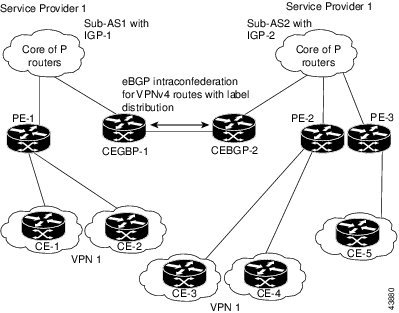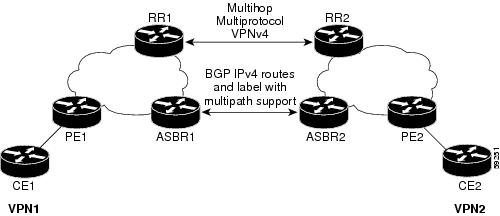MPLS L3VPN Overview
Before defining an MPLS VPN, VPN in general must be defined. A VPN is:
-
An IP-based network delivering private network services over a public infrastructure
-
A set of sites that are allowed to communicate with each other privately over the Internet or other public or private networks
Conventional VPNs are created by configuring a full mesh of tunnels or permanent virtual circuits (PVCs) to all sites in a VPN. This type of VPN is not easy to maintain or expand, as adding a new site requires changing each edge device in the VPN.
MPLS-based VPNs are created in Layer 3 and are based on the peer model. The peer model enables the service provider and the customer to exchange Layer 3 routing information. The service provider relays the data between the customer sites without customer involvement.
MPLS VPNs are easier to manage and expand than conventional VPNs. When a new site is added to an MPLS VPN, only the edge router of the service provider that provides services to the customer site needs to be updated.
The following figure depicts a basic MPLS VPN topology.

These are the basic components of MPLS VPN:
-
Provider (P) router—Router in the core of the provider network. P routers run MPLS switching and do not attach VPN labels to routed packets. VPN labels are used to direct data packets to the correct private network or customer edge router.
-
PE router—Router that attaches the VPN label to incoming packets based on the interface or sub-interface on which they are received, and also attaches the MPLS core labels. A PE router attaches directly to a CE router.
-
Customer (C) router—Router in the Internet service provider (ISP) or enterprise network.
-
Customer edge (CE) router—Edge router on the network of the ISP that connects to the PE router on the network. A CE router must interface with a PE router.






 Feedback
Feedback